By Evan Lipton
We’re all attuned to different sounds and sights when we visit the Blue Hills. In this article, you’ll walk with experienced birder, Evan Lipton, to explore the birds that are hidden in the Blue Hills. Follow Evan through the quiet trails of the Blue Hills on a hot summer day to enjoy the bird songs, baby birds and natural migratory transitions.
Two young Hairy Woodpeckers cling to a dead branch side by side. They’re still at the learning stage, the wide-eyed ‘why is that giant beast staring at me’ stage. One of their parents flies down and feeds them. It’s rare to see a Hairy Woodpecker so close. Their smaller cousin, the Downy, is usually the trusting one. They land a few feet from you and peeking out from behind a branch wonder how they suddenly got so close to you, as if it wasn’t their own wings that propelled them.
Even though the sun is out it is dark in the woods. It’s finally summer, the leaves are thick and green, the sun is high in the sky. A Ruby-throated Hummingbird buzzes by through the treetops, looking like an overgrown insect. The eerie fluting of a Wood Thrush drifts through the trees. It’s early July. The birds have finally settled down. Their migration is over here for the time being and the ones that stayed are busy raising families. Some raise one, some two, some even three. They seem so predictable now after the rush of migration, nothing unexpected is expected.
It isn’t quite evident here in the woods, but as the songbirds are settled in, the shorebirds are already on their way south. Many come through in August and some even in early July. Earlier in the day I was watching a family of Spotted Sandpipers at the Blue Hills Reservoir. The young are fully grown and foraging in the mud on their own. They probably bred here. Most shorebirds however go far north to breed. Along with the Spotted Sandpipers was a Least Sandpiper which breeds on the tundra and can be found in most any open wet area inland or near the coast during migration. The smallest sandpiper in the world, they are about the size of a sparrow.
I walked from the reservoir to Buck Hill, following the Skyline trail, and then winding my way towards Houghton’s Pond I took to some smaller paths. I watch the Hairy Woodpeckers until they fly off. I walk quickly now from the pond to the top of Great Blue Hill. I’ve tallied over 40 species so far on my hike, the majority of them breeding birds. Great-crested Flycatchers, Red-eyed Vireos, Ovenbirds, Pine Warblers, Scarlet Tanagers, and Baltimore Orioles are just a few of the birds that call the woods their home this time of year.
It’s getting hot by now as I climb Great Blue. I reach the top and tally my last few species, Eastern Bluebirds and a House Wren. Both nest in the boxes on the scrubby top next to the weather station. The House Wren flies from perch to perch singing its exuberant song. A few Tree Swallows fly high above the ground, dipping and diving acrobatically catching unseen insects.
Visit our website for more information on Boston birding.
Evan Lipton is a 17-year old Milton resident and avid birder.
Photo by Kim Magy. Yellow Warbler.


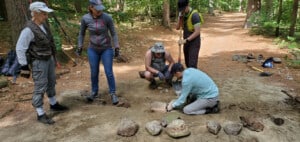
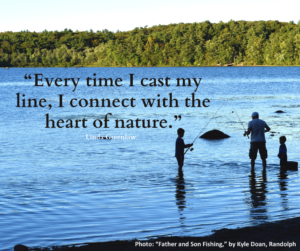
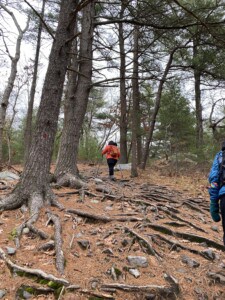

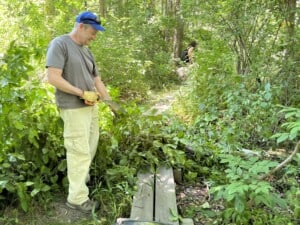
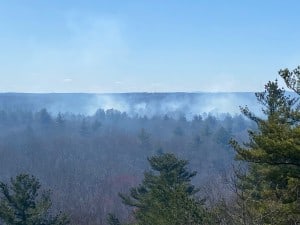

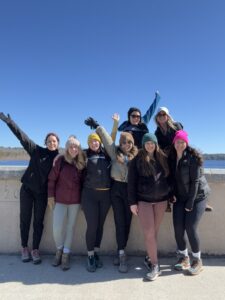


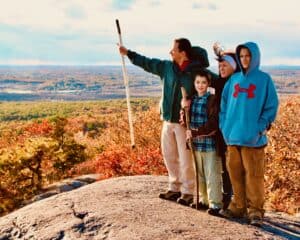
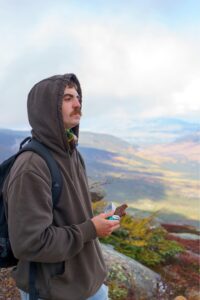
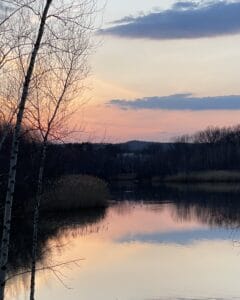
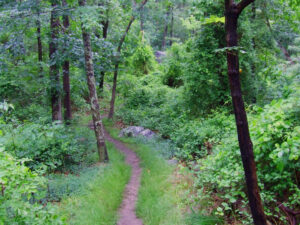

Hi Evan,
This past Memorial Day I spotted a bird and I was hoping you could identify it. I noticed a couple of them near the top of Big Blue off the Skyline Trail. If I remember correctly, this bird’s head was all black (like a hood), it had a solid white breast, and solid brown wings. No other markings that I noticed. It was larger than a sparrow, but much smaller than a robin. I can’t describe its call, but it was calling back and forth to another of the same kind. Any ideas?
Thanks!
Wayne,
I’ll pass on our question to Evan. If you’re on FaceBook — our facebook page is also a good place to ask questions like that! I’ll let you know when I hear back from someone who knows (because I admit, I’m no birder!)
Thanks for asking!
Judy
Hi Wayne,
The bird you describe sounds very much like an Eastern Towhee. They are a very common breeding bird on the tops of the scrubby hills in the reservation and often call back and forth to each other to keep in touch. Their call is a simple “tow-hee” or “che-wink”, up-slurred at the end. They are sparrows but are quite large, in between the size of the typical smaller sparrows and a robin.
Evan
Evan – thanks so much for letting us know!
Another one of our birders (Steve Olanoff) pointed out that this sounds like a female Eastern Towhee. He says that the male Towhee is much more colorful.
Thanks to everyone for the questions and answers!